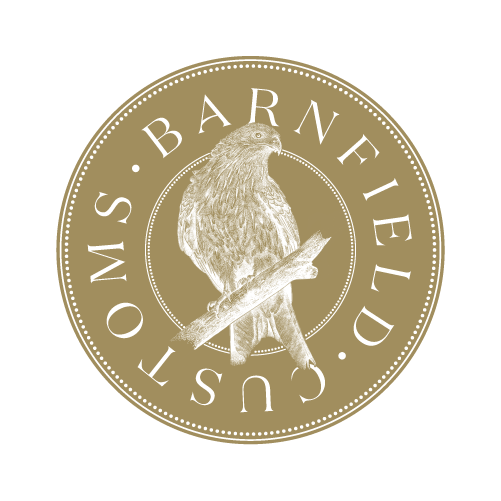Field Notes No.6
Every month, I email out a progress update on our jackets. We also drop in inspiring articles, podcasts, videos, books, events and others. Click here to sign up and be the first to know when pre-orders for our limited edition jackets launch.
Finding the right fabric is a minefield.
Every material has its own unique qualities - it's not enough to say "we'll make a winter jacket out of a heavyweight wool" for example. What do you mean by heavyweight? A fabric can be heavy without being warm. What do you mean by wool? How a woollen fabric's constructed - the warp, weave and weft, the spinning and the final finishing processes, etc. all effects how the fabric looks and behaves.
It's really not until you've gone from looking at a small swatch (a cutting of the fabric often around 8cm x 8cm) to ordering a length of sample yardage (a minimum order, often around 6 metres) that you get a feel for the material. Even then, it's not until you stitch up a prototype that you can really see whether you've made the right choice or not.
With the latest prototype, I thought I'd got it. I'd gone through a bunch of fabrics before I found a beautiful, heavyweight, organic cotton moleskin from Canada. Moleskin has a tight weave which means that it's wind and water resistant without the need for chemical treatments. It's been used in the past for military uniforms and workwear because although soft, it's as durable as denim or corduroy. The swatch looked and felt great so I pulled the trigger and ordered 6 metres of sample yardage. Enough to make 3 samples.
It's these samples that I'm using in Barnfield's social feed and on the website right now. Although the design itself has worked really well (more on that in the next emails) once I'd worn the jacket a couple of times, it was obvious that I hadn't got the fabric quite right.
This is the third prototype of our first limited edition jacket, inspired by military uniform, heritage workwear and motorcycle culture
Every single photo that I'm using has been photoshopped for hours to remove dust and fur...and that's after we lint rolled the jackets between every shot.
It's like moleskin is a fur magnet. Not a problem, I don't own any pets you might think. Before making these samples, I might have agreed with you but these shots were taken in a studio - no cats or dogs allowed. I didn't even have to make contact - it's like the fabric's just waiting to suck fur and dust out of the air.
Charlie and Mr. Scruffington. The perpetrators.
So it's been back to the drawing board but at least I'm not starting at square one. I've learnt so much by creating the prototypes and using them for the last 3 months. The best thing is that I've had the opportunity to integrate those lessons before going to market and finding out the hard way.
I've got a lead on a heavyweight organic cotton gabardine from a small, independent fabric mill just south of Paris. Gabardine's existed for centuries, it's a super durable, tightly woven fabric that was originally made from wool. The fabric we know as gabardine today was invented by Thomas Burberry and patented in 1888.
I'm drawn to the heritage of the fabric. My Great Grandfather would have recognised it and it's likely the officers of his regiment would have been issued with gabardine Burberry trench coats.
In a letter from T.E. Lawrence's brother Frank to his older brother Will, describing the uniform he would wear once deployed, he said "I shall not, I think, take a British Warm with me, but instead have my Burberry lined with oil-silk and fleece."
If this talk about my Great Grandfather and T.E. Lawrence makes no sense, you can check out Barnfield's origin story on the website by clicking the button below.
Thanks for sticking with me, I know these emails aren't quick reads! Next time, I'll be going through the design process from sketch through to the latest prototype.
Thank you to Martin, Matt, Richard, Ollie, Daniel, James, Steven, Hamish and John for signing up this week.
So stoked to have you follow the journey.
Speak soon,
Mark







